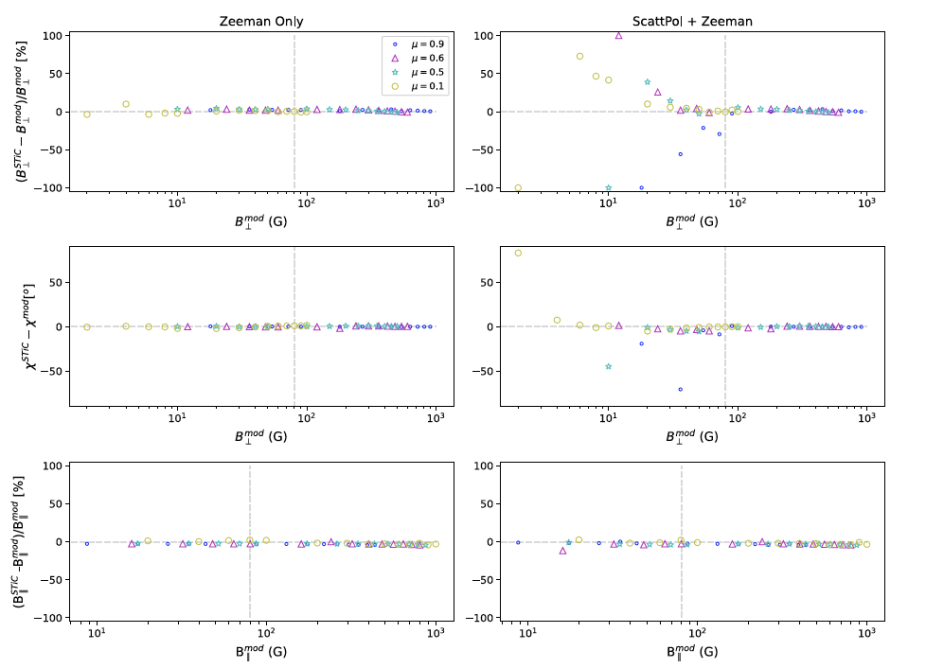Publication Name: The Astrophysical Journal; Author's names: Centeno, R., de la Cruz Rodriguez, J., del Pino Aleman, T.
Scattering polarization tends to dominate the linear polarization signals of the Ca II 8542 A line in weakly magnetized areas (B ~ 100 G), especially when the observing geometry is close to the limb. In this paper we evaluate the degree of applicability of existing non-LTE spectral line inversion codes (which assume that the spectral line polarization is due to the Zeeman effect only) at inferring the magnetic field vector and, particularly, its transverse component. To this end, we use the inversion code STiC to extract the strength and orientation of the magnetic field from synthetic spectropolarimetric data generated with the Hanle-RT code. The latter accounts for the generation of polarization through scattering processes as well as the joint actions of the Hanle and the Zeeman effects. We find that, when the transverse component of the field is stronger than ~80 G, the inversion code is able to retrieve accurate estimates of the transverse field strength as well as its azimuth in the plane of the sky. Below this threshold, the scattering polarization signatures become the major contributors to the linear polarization signals and often mislead the inversion code into severely over- or under-estimating the field strength. Since the line-of-sight component of the field is derived from the circular polarization signal, which is not affected by atomic alignment, the corresponding inferences are always good.

Inversion results for observing geometries away from the disk center. The panels show the relative (percent) differences between the magnetic field values retrieved by the STiC inversions and those in the model atmospheres used for the Hanle-RT syntheses. Left and right correspond, respectively, to the Zeeman-only and the full calculation with atomic polarization cases. The top two rows show the results for the strength and the azimuth of the transverse component of the magnetic field, while the bottom panels present the results for the LOS magnetic field.